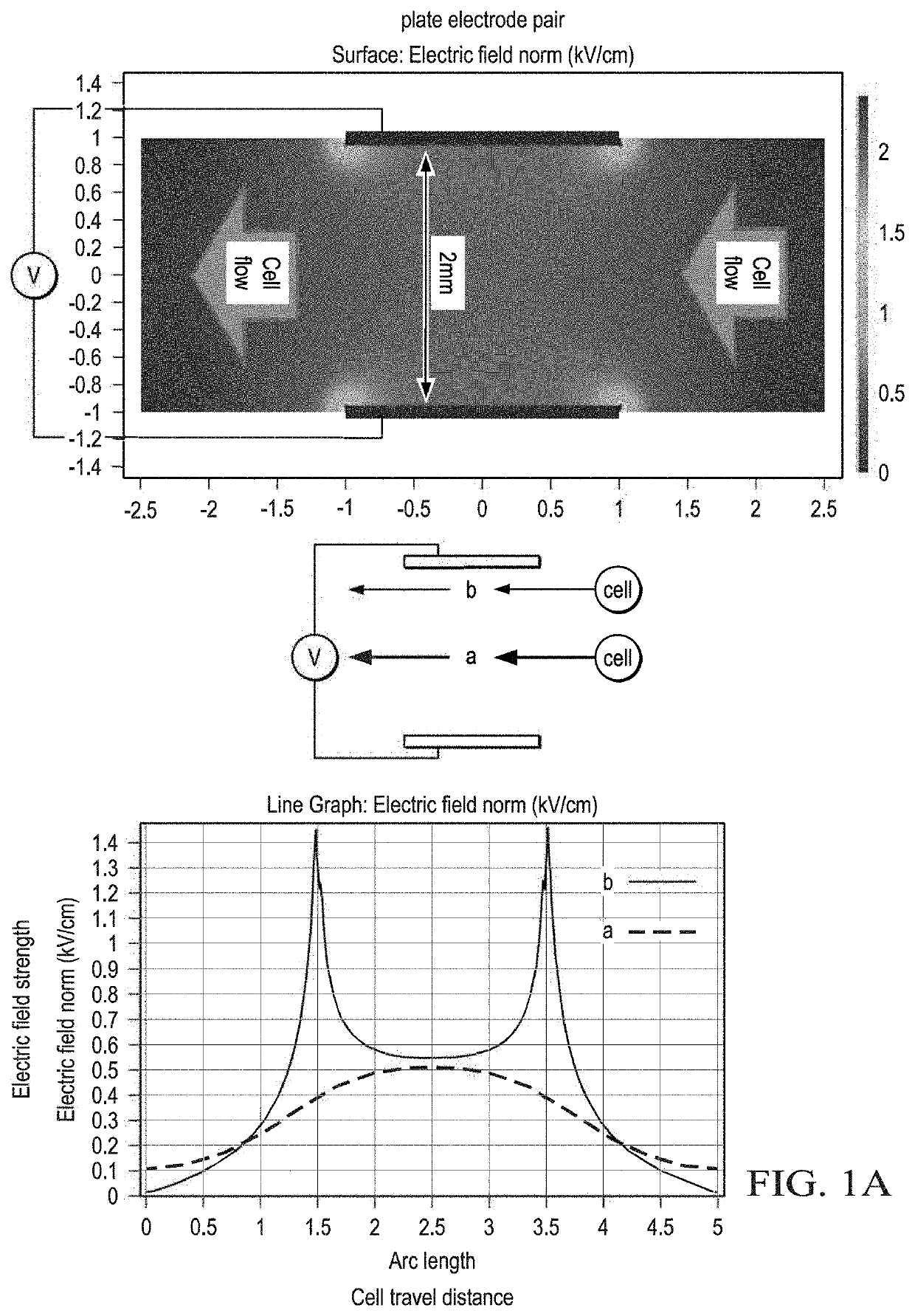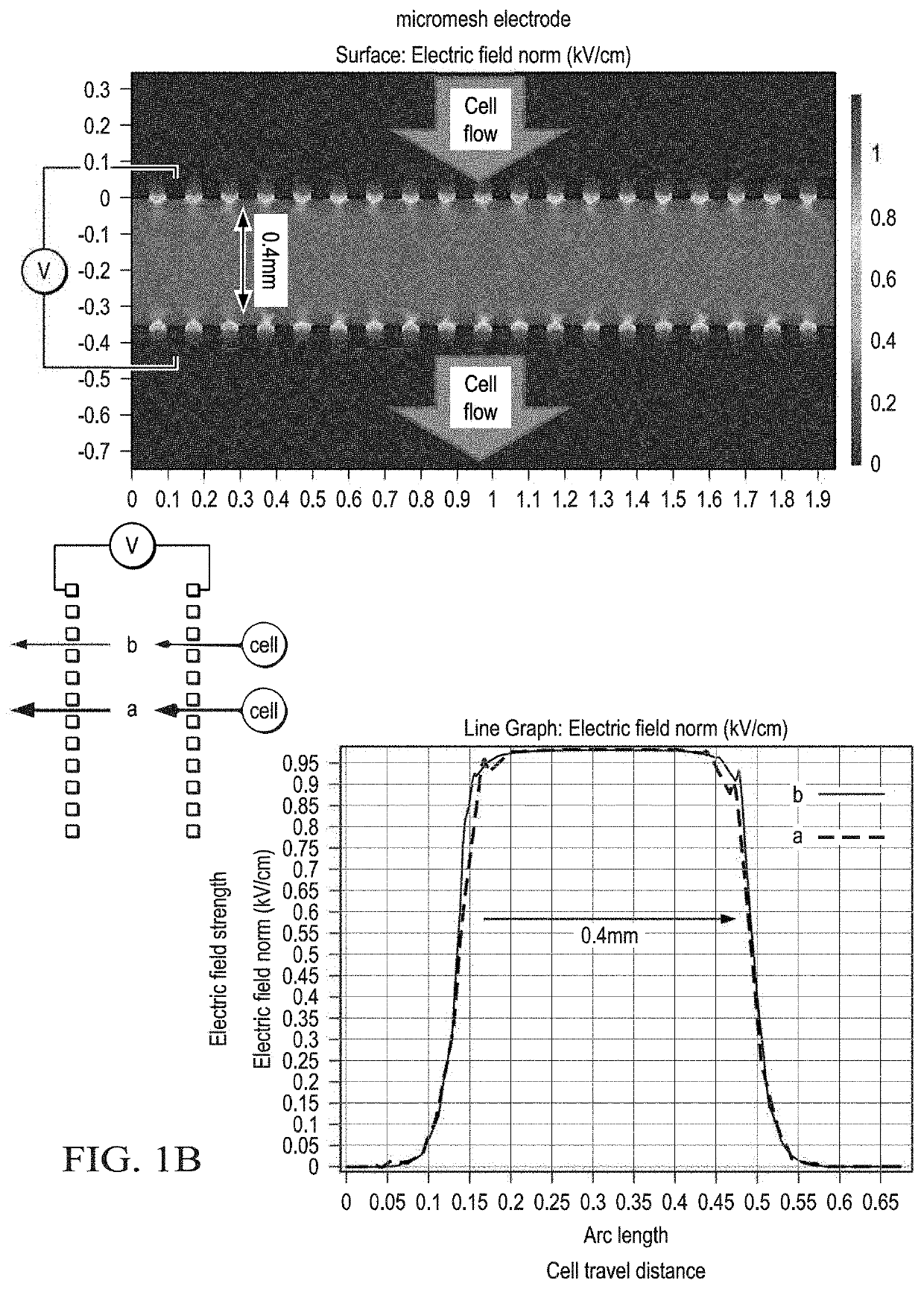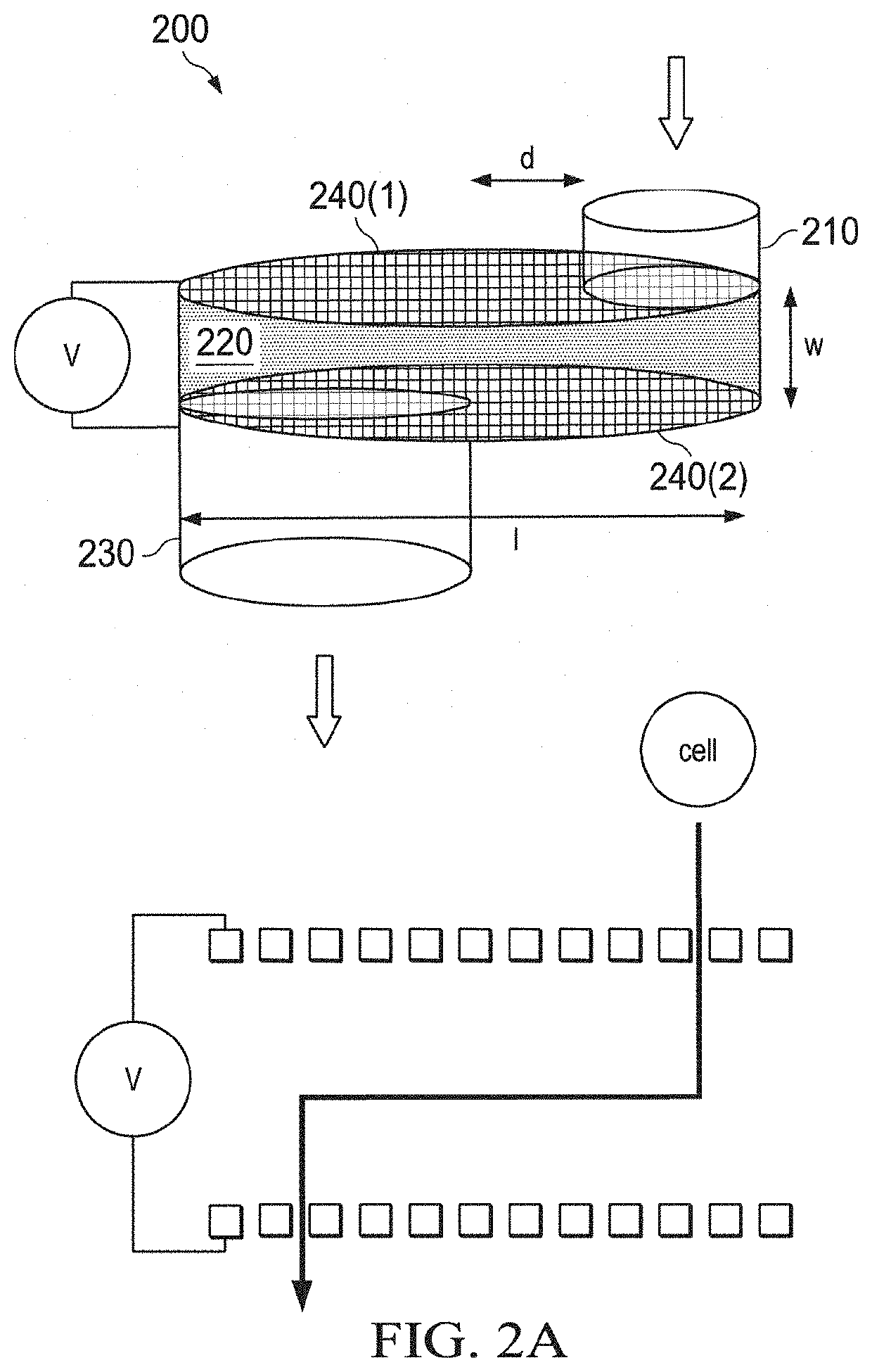Micro Flow-Through Electroporation Devices And Methods Of Cell Transfection
- Summary
- Abstract
- Description
- Claims
- Application Information
AI Technical Summary
Benefits of technology
Problems solved by technology
Method used
Image
Examples
example 1
ion of haNK Cells
[0128]In some aspects, conditions for the electroporation of haNK cells are shown in Table 2 below
TABLE 2Conditions for Electroporation of haNK CellsEPEPParameterValueParameterValueCargoDextran 500k (dx500k) at 50 ug / ml;Flow Rate4-6.8 millionGFP-mRNA (mRNA) at 50 ug / mLcells / minCell density5 × 106~1 × 107 / mLTotal16 million cellsSampleMediaBTX: 8 mS / m, 0.27 osm / l;Frequency2HzCw100: 0.11 S / m, 0.12 osm / l;RPMI: 1.37 S / m, 0.28 osm / lResistance200Ω - infNo. of3-4 pulses(Rp)Pulses(discharging ormonophasic pulsetrain)Electric Field1-3 kV / cmQavg0.11-0.44mL / minCapacitance10 uF-150 uFSample Size0.45mL(cuvette)DeviceØ5 mm, d = 420 um, Reg;Time10-30msParametersØ5 mm, d = 560 um, Reg;constantØ10 mm, d = 284 um, offset
[0129]FIGS. 6A-E show experimental results of electroporation reactions. FIG. 6A shows a variety of experimental conditions with varying efficiencies and viabilities. Notably, the conditions of 1.5 kv / cm, Rp 1 k, 10 uF using the IOCO electroporation device resulted in ...
example 2
ion of EC7 Cells
[0131]Typical conditions for the electroporation of EC7 cells are show in Table 3 below
TABLE 3Conditions for Electroporation of EC7 CellsEPEPParameterValueParameterValueCargoDextran 500k (dx500k) at 50 ug / ml;Flow Rate4-17.6 millionGFP-mRNA (mRNA) at 50 ug / mL;cells / minGFP-DNA (DNA) at 50 ug / mLCell density5 × 106~4 × 107 / mLTotal16 million cellsSampleMediaBTX: 8 mS / m, 0.27 osm / l;Frequency2HzCw100: 0.11 S / m, 0.12 osm / l;Cw240: 0.2 S / m, 0.24 osm / l;Eppendorf: 0.35 S / m, 0.09 osm / l;waterResistance200Ω to infNo. of3-4 pulses(Rp)Pulses(discharging ormonophasic pulsetrain)Electric Field0.3-3kV / cmQavg0.44mL / minCapacitance10-75uFSample Size0.44-0.45mL(cuvette)DeviceØ5 mm, d = 420 um, Reg;Time5-20msParametersØ5 mm, d = 560 um, Reg;constantØ10 mm, d = 284 um, offset
[0132]FIGS. 8A-D show experimental results of electroporation reactions in EC-7 cells. FIG. 8A shows a variety of experimental conditions with varying efficiencies and viabilities. Notably, the conditions of 1 kv / cm, Rp 2...
example 3
ration of Various Cell Types
[0139]In other aspects, the methods and systems provided herein may be used to transfect a variety of different cell types. For example, up to 108 cells or more can be transfected by the methods and systems provided herein. The methods and systems provided herein may be used to transfect EC7 cells, haNK cells, CHO cells, and T cells. For example, the methods and techniques presented herein may be used to transfect EC7 cells using a flow rate of 0.6 ml / min with a cell concentration of 4×107 cells / ml. In another example, the methods and techniques presented herein may be used to transfect haNK cells using a flow rate of 0.36 ml / min with a cell concentration of 3×107 cells / ml. In yet another example, the methods and techniques provided herein may be used to transfect CHO cells using a flow rate of 0.45 ml / min with a cell concentration of 2.5×107 cells / ml. For T cells, the methods and techniques presented herein may be used to transfect T cells at a flow rate...
PUM
| Property | Measurement | Unit |
|---|---|---|
| Time | aaaaa | aaaaa |
| Time | aaaaa | aaaaa |
| Time | aaaaa | aaaaa |
Abstract
Description
Claims
Application Information
 Login to View More
Login to View More - R&D
- Intellectual Property
- Life Sciences
- Materials
- Tech Scout
- Unparalleled Data Quality
- Higher Quality Content
- 60% Fewer Hallucinations
Browse by: Latest US Patents, China's latest patents, Technical Efficacy Thesaurus, Application Domain, Technology Topic, Popular Technical Reports.
© 2025 PatSnap. All rights reserved.Legal|Privacy policy|Modern Slavery Act Transparency Statement|Sitemap|About US| Contact US: help@patsnap.com



